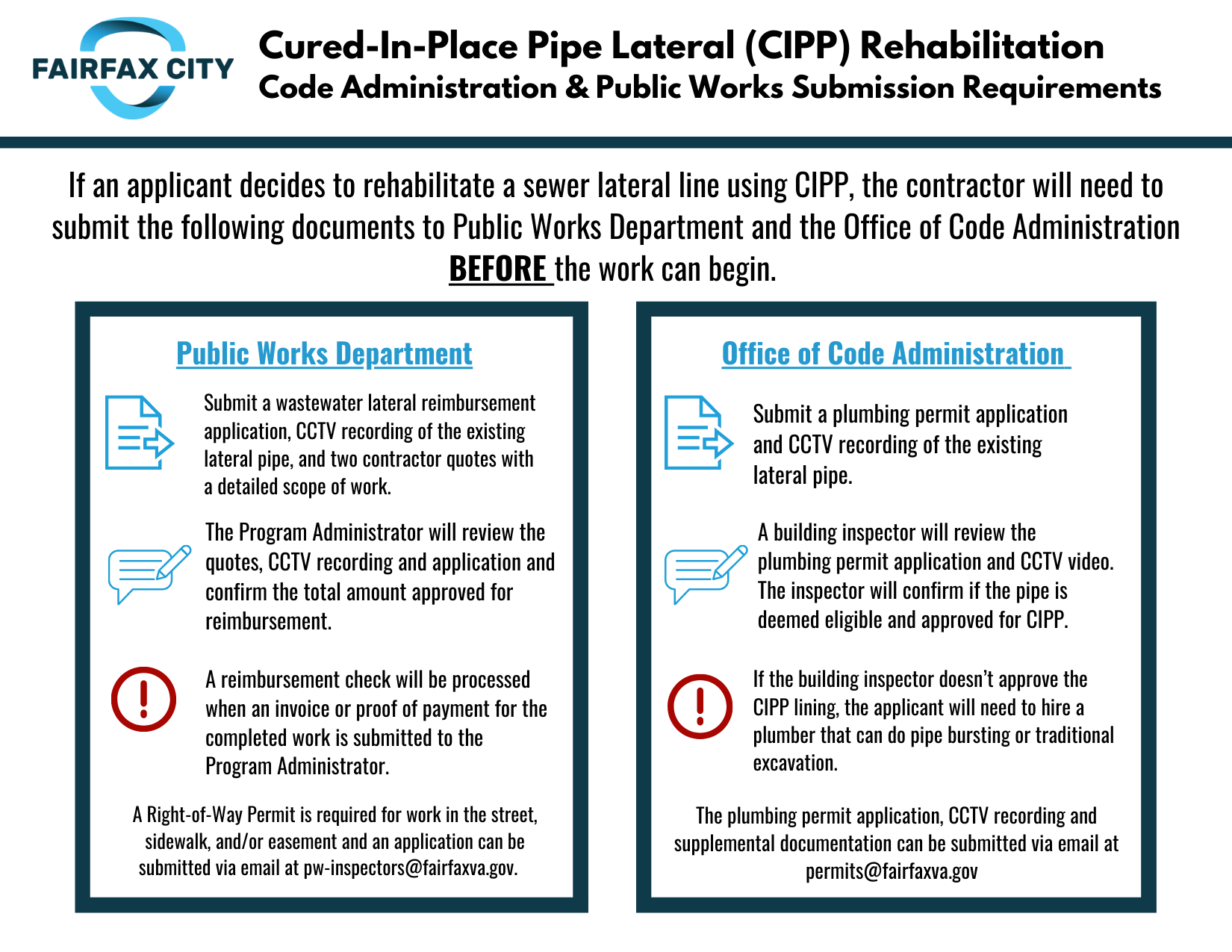What is CIPP?
Cured-in-Place-Pipe Lining (CIPP) is a trenchless method of sewer lateral rehabilitation. The CIPP process involves inserting a flexible liner with resin inside the existing pipe, inflating the liner, and exposing it to heat or ultraviolet light to dry and harden the liner inside the pipe. The liner forms a smooth surface inside the existing pipe, restoring it to near-new condition.
CIPP Limitations & Disadvantages
The “trenchless” pipe repair can be installed in significantly less time, is more cost-effective, and requires little or no digging. However, there are some limitations and disadvantages of CIPP.
- Ineligible Pipes: Since the epoxy liner takes the shape of the host pipe, the existing pipe cannot be collapsed, back-pitched or fragile.
- The epoxy lining will not correct any structural defects in the existing pipe.
- Existing structural defects in the lateral line must be replaced and/or repaired before the CIPP liner is installed. The structural defect repair and/or replacement must be approved by the Office of Code Administration.
- Fragile Orangeburg pipes may get damaged during the hydro-jetting process used to clean them before inserting the liner which would make them ineligible for CIPP.
Applying for a CIPP plumbing permit
The Office of Code Administration is responsible for reviewing, approving, and issuing the plumbing permit for CIPP. If an applicant decides to rehabilitate a sewer lateral line using CIPP, the contractor will need to submit the following documents before the work can begin:
- A plumbing permit application and a CCTV recording of the existing lateral line to determine if the line is eligible for CIPP.
- Please note: If a 10+ foot section of the existing lateral line needs to be replaced before the CIPP liner is installed, two plumbing permit applications are required. One for the pipe replacement and one for the CIPP lining.
- A building inspector will review the permit application submission and reach out if the pipe is deemed eligible for CIPP.
- If the building inspector doesn’t approve CIPP, the applicant will need to hire a plumber that can do pipe bursting or traditional excavation.
The plumber can send the CCTV recording, plumbing permit application, and any supplemental documents directly to permits@fairfaxva.gov.
*Please refer to the 2018 Virginia Plumbing Code Section 717 Relining Building Sewers and Building Drains for additional information*

